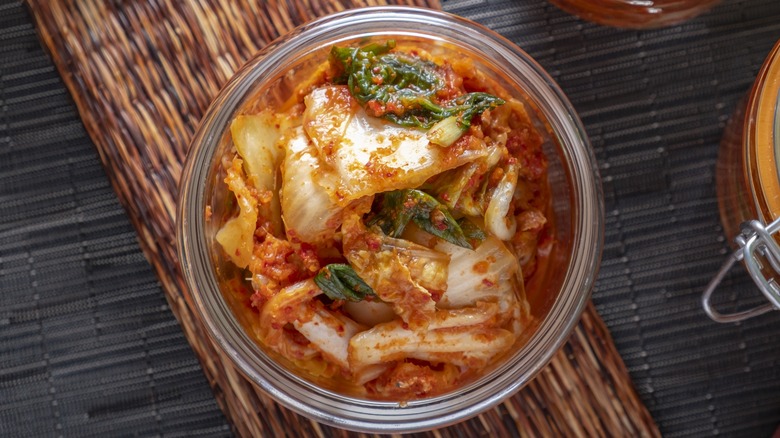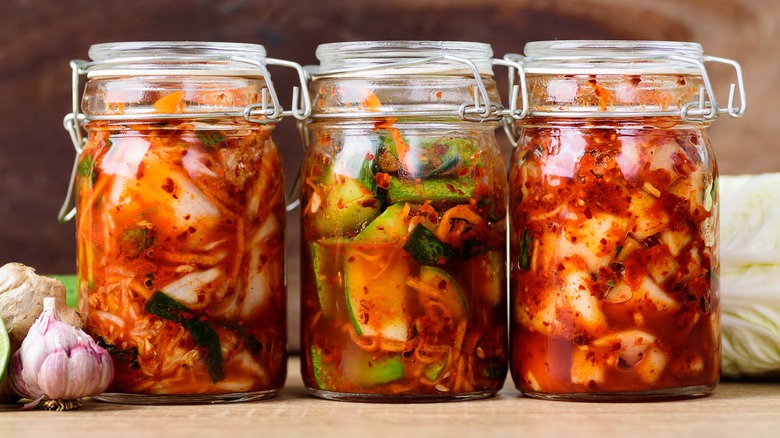The White Spots On Kimchi Aren't Mold, But Here's How To Get Rid Of Them Anyway
Have you ever found white spots on your kimchi? If so, it would be understandable if you mistook them for mold — and you were probably right to play it safe and discard the jar. But, as it turns out, those white spots aren't really mold at all. A 2018 study published in the Journal of Microbiology identified them as yeast. Visible yeast — colonies of microscopic fungi – often appears near the surface during the later stage of kimchi production, and it's what's responsible for the formation of white growths on your kimchi.
It's why you may also sometimes find it on other fermented food products, like miso paste, soy sauce, and rice wine. While they may not be mold, you'll likely want to get rid of these white spots anyway. The best way to do that is to skim it off the top of whatever it may be sitting on — whether that be a piece of pear, cabbage, mustard leaf, or radish — rinse it under water, then heat it up before eating it.
The only downside to doing this is that your kimchi will lose its beneficial probiotic bacteria, as well as some of its salty and spicy flavor. Rinsing kimchi before eating it is actually a pretty common practice for children and elderly people who find its flavor too strong. However, if you're adamant about preserving all of your kimchi's flavor, you'll have to store it in a way that prevents the white spots on the top from growing in the first place.
Storing your kimchi correctly
To keep the white spots from appearing on top of your kimchi, you have to start by storing it correctly — and the first rule to storing kimchi is ensuring that it's kept at the right temperature. Kimchi needs to be stored at a temperature below 39 degrees Fahrenheit, but it can't just be left anywhere in your fridge. The best place to keep kimchi is in the back of one of the upper shelves where the temperature stays the coolest, and never in the door.
Like you do when storing chili crisp, you also want to limit its exposure to the air as much as possible, and you should always take care to make sure you're closing the lid tightly before putting it away. Additionally, when you've used most of your kimchi up, it's a good idea to transfer it to another, smaller container — just make sure both the container and the lid are sanitized first.
Besides the more obvious rules like always using clean utensils for your kimchi, one thing that is imperative to preventing yeast growth is keeping the cabbage and other fruits and vegetables fully submerged under the liquid. This will further reduce how much your kimchi is exposed to the air, but, if this isn't possible, you can also cover the surface of the kimchi with sanitized cling film or salted outer cabbage leaves. If you follow these steps for storing your kimchi, you'll never be riddled by those white spots again!

